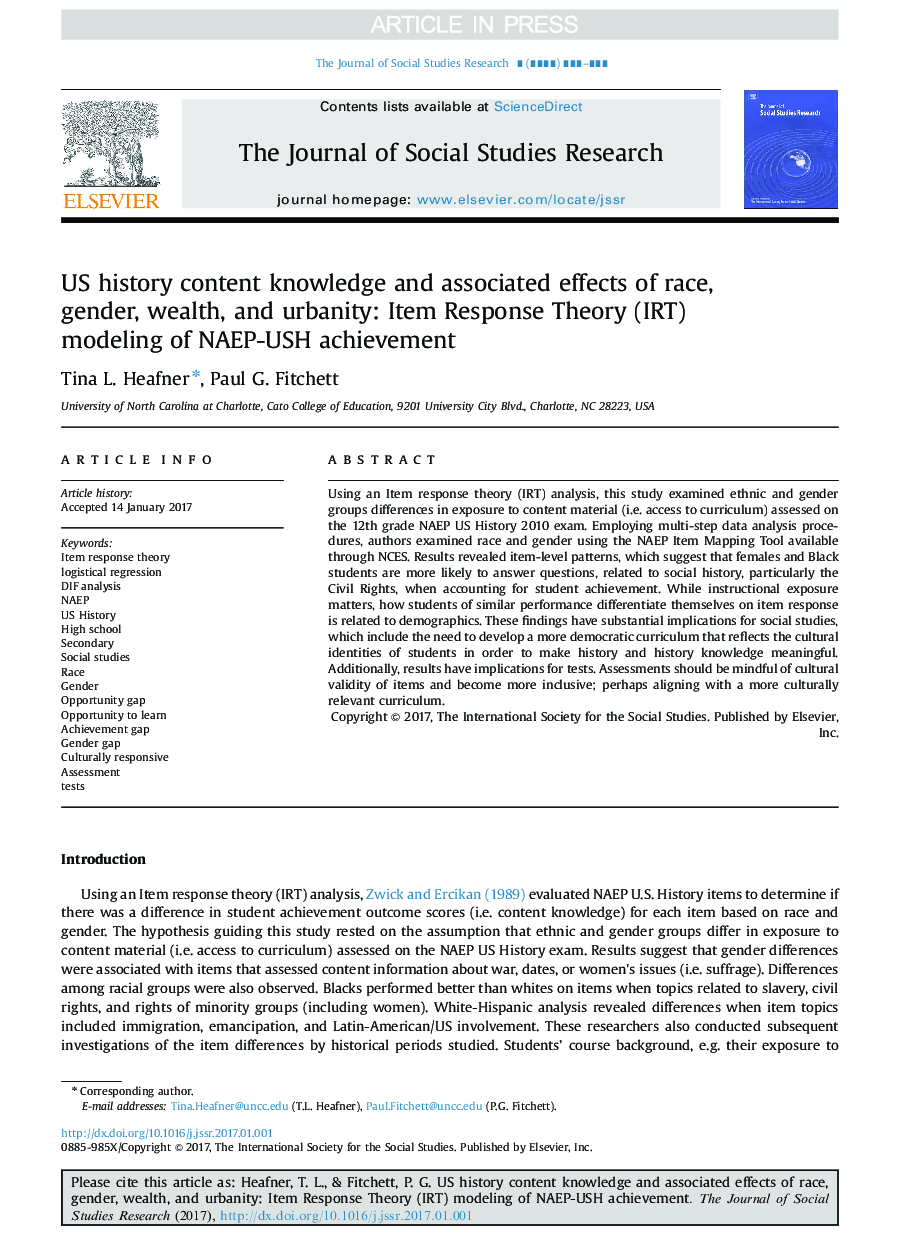| Article ID | Journal | Published Year | Pages | File Type |
|---|---|---|---|---|
| 6559738 | The Journal of Social Studies Research | 2018 | 15 Pages |
Abstract
Using an Item response theory (IRT) analysis, this study examined ethnic and gender groups differences in exposure to content material (i.e. access to curriculum) assessed on the 12th grade NAEP US History 2010 exam. Employing multi-step data analysis procedures, authors examined race and gender using the NAEP Item Mapping Tool available through NCES. Results revealed item-level patterns, which suggest that females and Black students are more likely to answer questions, related to social history, particularly the Civil Rights, when accounting for student achievement. While instructional exposure matters, how students of similar performance differentiate themselves on item response is related to demographics. These findings have substantial implications for social studies, which include the need to develop a more democratic curriculum that reflects the cultural identities of students in order to make history and history knowledge meaningful. Additionally, results have implications for tests. Assessments should be mindful of cultural validity of items and become more inclusive; perhaps aligning with a more culturally relevant curriculum.
Keywords
Related Topics
Social Sciences and Humanities
Social Sciences
Education
Authors
Tina L. Heafner, Paul G. Fitchett,
